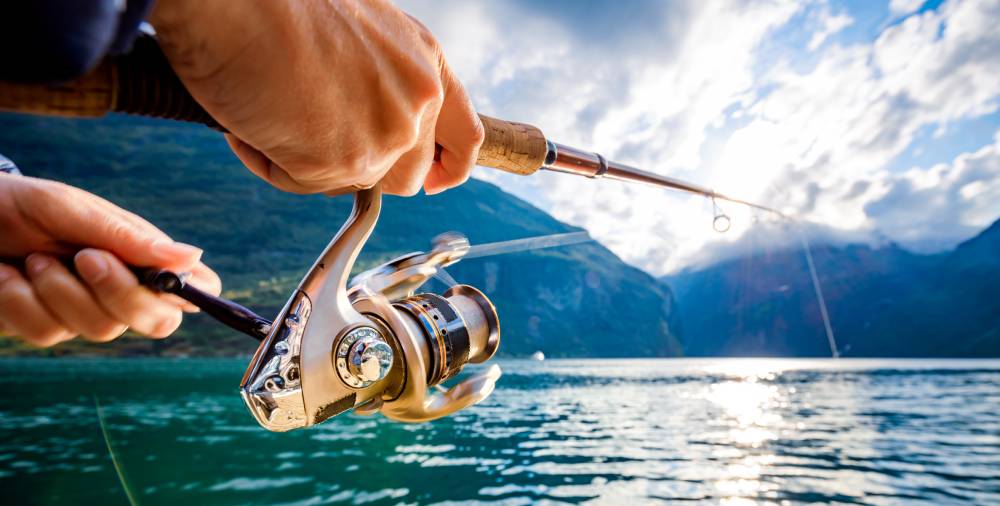
Stocking up on fishing gear during Cyber Monday and Black Friday is what any veteran fisher knows to do. If you know what you want, then go ahead and purchase all of your regular gear during this time.
Yet, if you’re a beginner, try to gather as many unique and valuable pieces as possible for much lower prices. This will give you considerable flexibility.
So, if you’ve your eye on a specific piece that you wish to own but can’t afford, the least you can do is place it in your cart and wait for a deal to come up during either Black Friday or Cyber Monday.
Contents
Kayaks
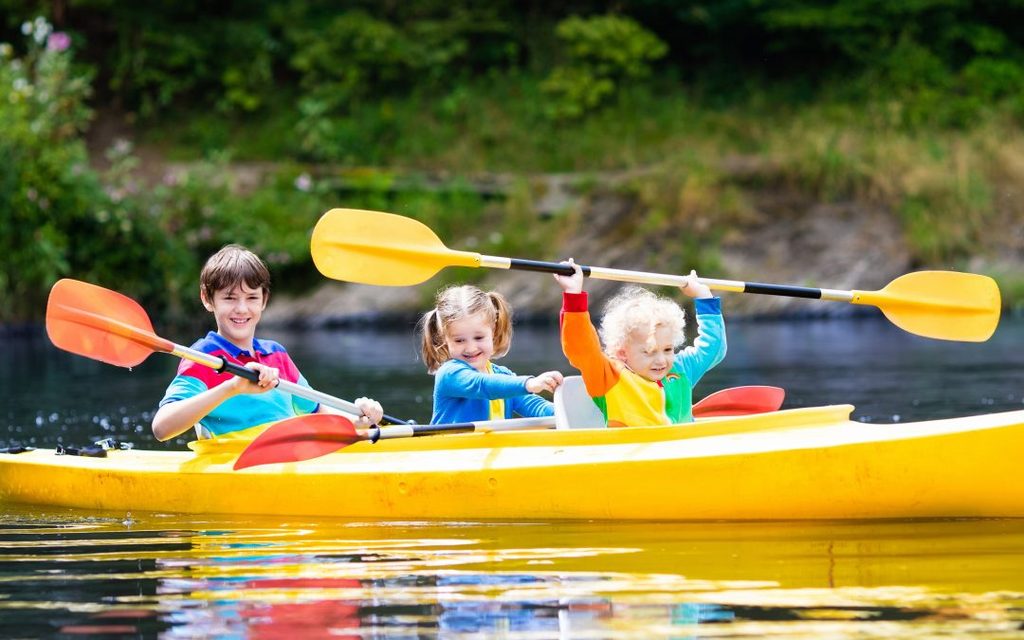
We can’t speak about fishing without mentioning kayaking! Probably the two most conjoined activities have to be fishing and kayaking. So, we’ll tell you a little bit about the basics of kayak types; flatwater kayaks and white water kayaks.
Flat Water Kayaks
As suggested by the name, flatwater kayaks are designed for slow, calm waters. That can include lakes, ponds, slow rivers, and shores, but nothing too rocky. They don’t have the strength to carry you through brutal waves.
Touring
Touring kayaks are known for their length, and that is the most prominent difference between them and other sit-inside kayaks, which we’ll discuss later on. They’re mostly 12-15 ft long and are designed for longer trips. Subsequently, they’ve plenty of storage, both in the hull and the bow.
Sit-On-Top
Sit-on-top kayaks are the best choice to go with in case you’re a beginner. They come with minimal storage, so you’ve to be basic with your equipment. Plus, more often than not, you’ll find yourself wet as you’re fully exposed to the water.
You’ll be entirely on top of the kayak with no part of you inside. They can carry around 350- 400 lbs, which is great. Moreover, when it comes to width, these guys are wider than other kayaks.
Hence, they provide stability and control. The bottom line is that they’re great when you want to relax on warmer days during the summer.
Sit-Inside
Set-inside kayaks are the most robust and sturdy kayak variety. As a kayaker/angler, your legs are inside the cockpit, which covers up to your waist. You can use a spray skirt to protect the rest of you, but that can constrict your movement during fishing.
Sit-inside kayaks can be anywhere between 8-12 ft, so they’re sometimes mistaken for whitewater kayaks.
Inflatable
Inflatable kayaks aren’t exclusively flatwater ones. There are models designed for this and others intended for that. The inflatable kayak has grown exponentially lately. Nowadays, we’ve kayaks made out of Polyethylene, Hypalon, PVC, and Neoprene.
You’ll find that some have various air compartments for safety, storage, double stitching, and many options that you can choose from.
Peddling
Peddling kayaks are very well-known in resorts and hotels, as they’re a popular demand amongst tourists. Besides, they’re great for those who suffer from back, shoulder, or arm problems.
You only need your hands to steer the kayak using a stick or small wheel; otherwise, your leg muscles will be doing all of the work. Peddling kayaks are capable of taking you further than standard kayaks, especially if they’ve a propeller that will help you boost your speed.
The only downside here is the price and the fact that these kayaks are large and bulky. So, if you can snag one during either Black Friday or Cyber Monday, you would’ve hit the jackpot.
Recreational
Recreational kayaks are the smaller version of touring kayaks. They’re also sit-inside kayaks that are more suited for shorter trips, nothing longer than one day on the water. The only downside here is that their tracking can sometimes be lacking.
White Water Kayaks
Now, we’ll speak about whitewater kayaks, which are designed for wild currents. That includes oceans, seas, and fast rivers,
River Runners
River runners are the improved version of playboats, which we’ll discuss later on. They mostly have a length of 7-8 ft, which provides for much better tracking. They’re still not the best for races, but they enjoy plenty of storage, so they’re an excellent option for fishing white waters.
Playboats
Playboats are probably our smallest kayak, at only 6 ft. These aren’t used for racing or for crossing from one point to the other. As a matter of fact, they’re used for freestyle competitions and doing tricks, that is, if you’re a professional.
If you’re an amateur, or you just kayak as a hobby, then they’re best used when you want to enjoy the waves in your spot. Unfortunately, river runners have little to no storage, and they’re rather pricey.
Creek boats
Creek boats are all about excitement! They’re designed for heavy drops and steep waters, as they range between 7.5-9 ft. when it comes to length. They’ve plenty of storage and chimes.
What are chimes? Simply put, the final borders of the kayak that go underwater. These can be either rough or soft. If it’s the first, the boat will be faster, lighter on water, and maneuverable.
If it’s the latter, then the boat will be way more stable on the water surface, as there will be more surface contact between the water and the boat. That is contrary to the rough borders which touch the water minimally.
Duckies
Duckies is the second term for inflatable kayaks. These are designed to be incredibly robust and customizable. So, you can find ones designed to make tighter corners easily, follow steep waters, and invade the high waves.
Rods
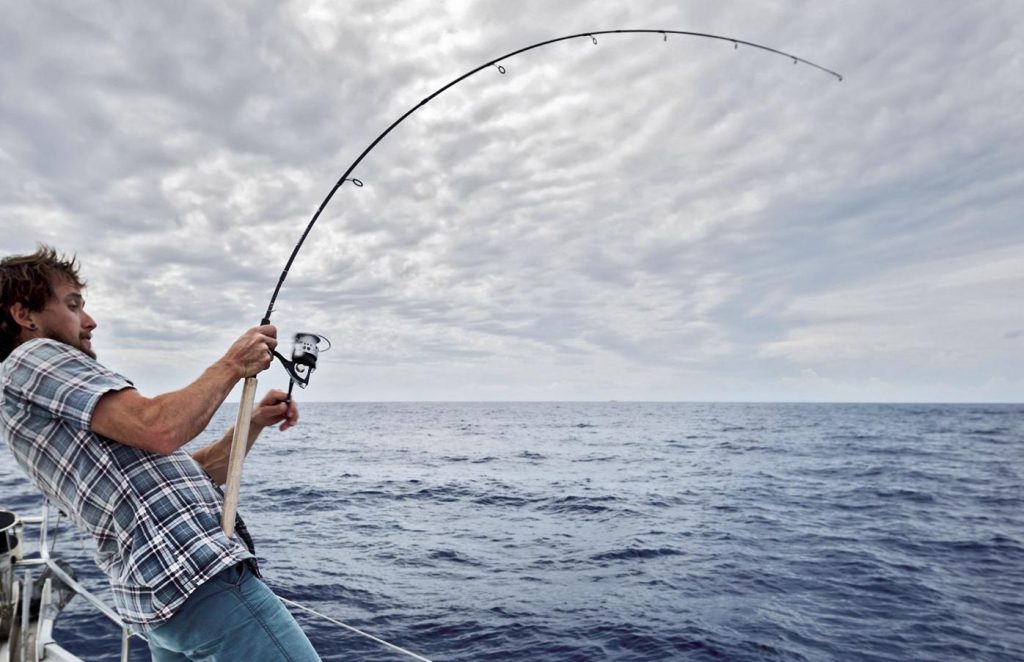
Probably the first piece of equipment that you’re going to think about is a rod, and we’ll talk a little about its types. The thing about rods is that they can vary in size drastically.
Types
Ultralight
Realistically, ultralight fishing rods aren’t a separate type. They can be spinning rods, casting rods, and even fly rods. The thing is, as the name suggests, they’re a variety of rods designed to be smaller, more delicate, lightweight, and versatile.
They’re a great choice to go with when traveling or chasing smaller species. Nonetheless, keep in mind that they’re not as robust as other bigger rods.
Spinning
Spinning rods are the most common fishing rods present on the market today. They’re the most comfortable to hold and the most basic, giving fishers complete dominance over both the rod and the reel. Spinning rods vary in dimensions greatly; subsequently, they can be used for catching almost all types of fish.
Telescoping
Just as the name suggests, telescoping rods are those that can shrink within themselves to suit your needs. When traveling or hiking, you don’t want to keep holding the rod in your hand.
With the telescoping rod, you can just adjust its length and stash it away. In reality, telescoping rods are incredibly advanced. Today, you can use them to fish all types of species without trouble. Plus, manufacturers have worked on the joints where the pieces meet to eliminate any weaknesses.
Trolling
Trolling rods are the ones that exist on the sides of the boat. So, if you do own a boat, and wish to update, and make it suitable for your fishing trips, then waiting for a deal on one or two trolling rods would definitely be the way to go. Keep in mind, though, that they’re not suitable for all fish species as they’re pretty rigid.
Spincast / Casting
Spincast rods are the second most popular ones and the easiest to hold in your hand; hence are used for training beginners. Even their line mechanism is a piece of cake. It starts and stops with a flick of your thumb, so there is nothing complicated. It hardly ever causes tangling of the line, and as the reel is on top of the rod, you can deal with it with relative ease.
Fly
Fly fishing is a peculiar fishing technique. It requires a lot of expertise and familiarity with your rod and reel, which is why you can’t fly fish without a fly rod. Thankfully, fly rods come in all shapes and sizes, so they can be used to chase after any species that you can find. Besides, thanks to the extensive length of the rod, the experience of fly fishing will become much more exciting.
Surf
Do you know when you’re passing by the shore or even a bridge that lies atop any waterfront? You’ll see some people standing with the rods next to them, implanted in the sand or sitting on rocks.
The most prominent feature regarding these rods is how tall they’re, which allows the fishers to place whatever baits they prefer in larger amounts and still maintain incredible casting distances.
So, although it’s not for everyone, and you need to have patience using a surf rod, it’s incredibly fun to go through the full procedure.
Materials
Graphite
We’ll start with the most expensive rod, which is the graphite one. Thanks to its strength and flexibility, it can help you when you need to act ASAP.
Fiberglass
Fiberglass rods are sturdier, heavier, and larger. They’re capable of chasing gigantic fish species as they’re fast in action.
Composite
Composite rods are a mix of the two previous ones. The strength of fiberglass, along with the flexibility of graphite, makes a great concoction. At the end of the day, it’s less expensive than graphite and more expensive than fiberglass. So, getting a deal on it is definitely a win-win situation!
Reels
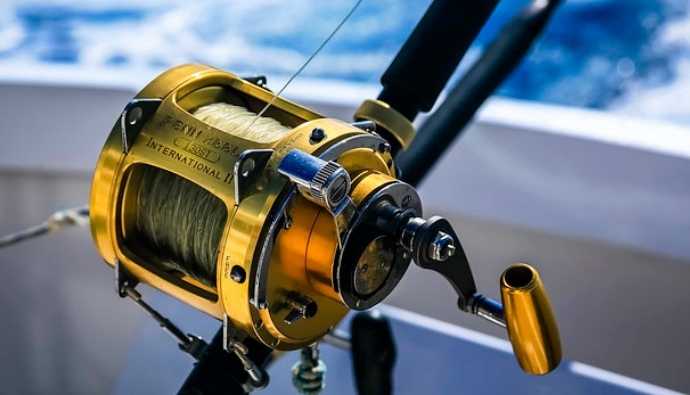
A reel is the second vital component of your fishing gear, which controls both your cast and line. The thing about reels is that you mustn’t forget about the mechanism inside; the drag system, the ball bearings, the inner gears, and what it’s made out of. Some reels have titanium ball bearings which are much more expensive than stainless steel ones. Plus, they’ve entirely sealed systems. All of these details weigh in heavily when it’s time to price the product.
Spinning
Just like the spinning rod, spinning reels are the most common ones out there, as they’re the most basic. They’ve an open design that allows you to control the line and the spool easily. Lastly, the bail opens with the flick of the thumb and closes automatically after you cast.
Baitcast
Baitcasting reels are the advanced choice. They’re way more suited for veteran fishers who want to dive deeper and deal with finickier species. They’re designed to allow access while still protecting the reel from water damage.
Additionally, they come with a spool tension knob and a braking system to eliminate the chance of birds’ nests.
Spincast
Spincast reels are the middle ground between the other two. They’re not as simple as spinners, nor as complicated as bait casters. You see, they come with adjustment and a closed design, so both a beginner and a moderately experienced fisher can comfortably use a spin caster.
PFD
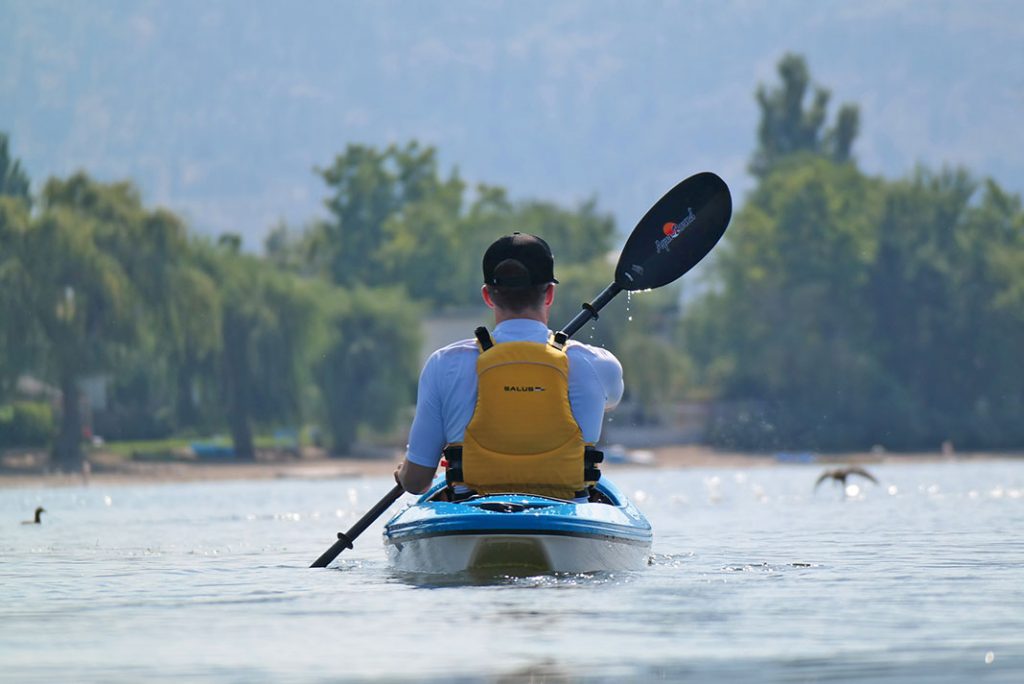
PFD, or personal flotation devices, can include many pieces. It all depends on the activity you’re participating in. Yet, since we’re speaking about fishing, the only piece of PFD that you actually need is your life vest, and that can be expensive!
Fish Finders
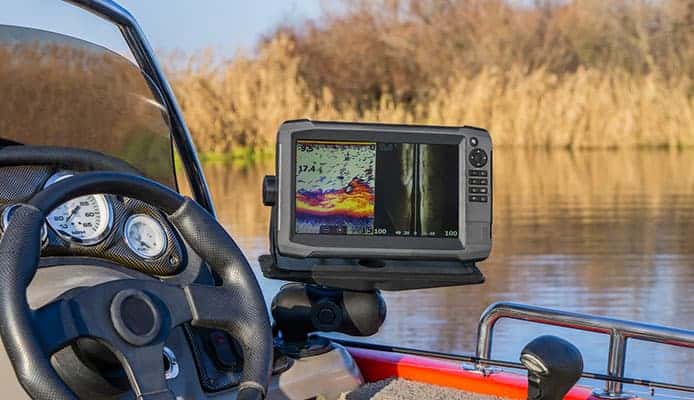
Nowadays, the technology put in fish finders makes them act as GPS and connection devices simultaneously. Through the screen, you can see all that’s present below and how far everything is, so you know where to cast. You might also have mapping software for making your own routes.
GPS
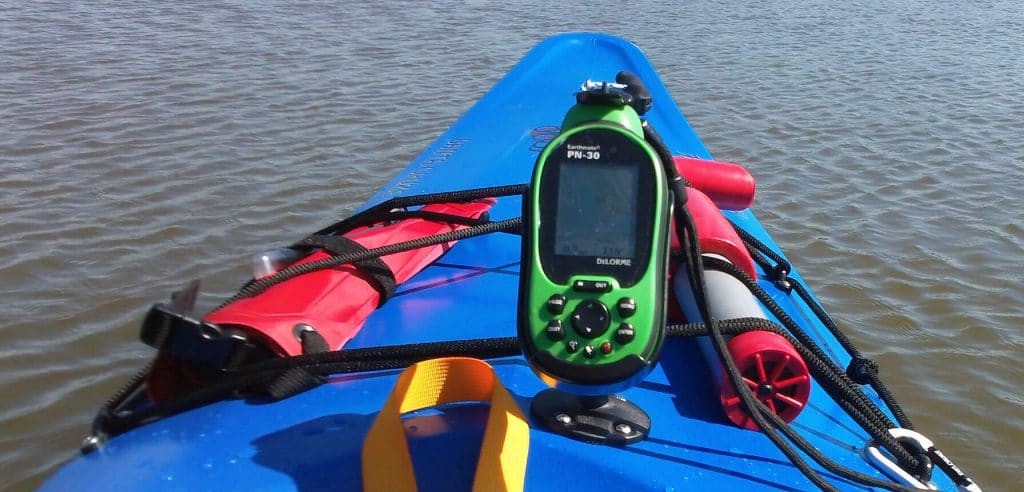
GPS is an incredible piece of equipment that you can purchase alone if you wish. Otherwise, you can use it from your phone or your fishfinder. GPS isn’t only used for reaching places, but for creating your own routes and maps as well.
Fishing Line
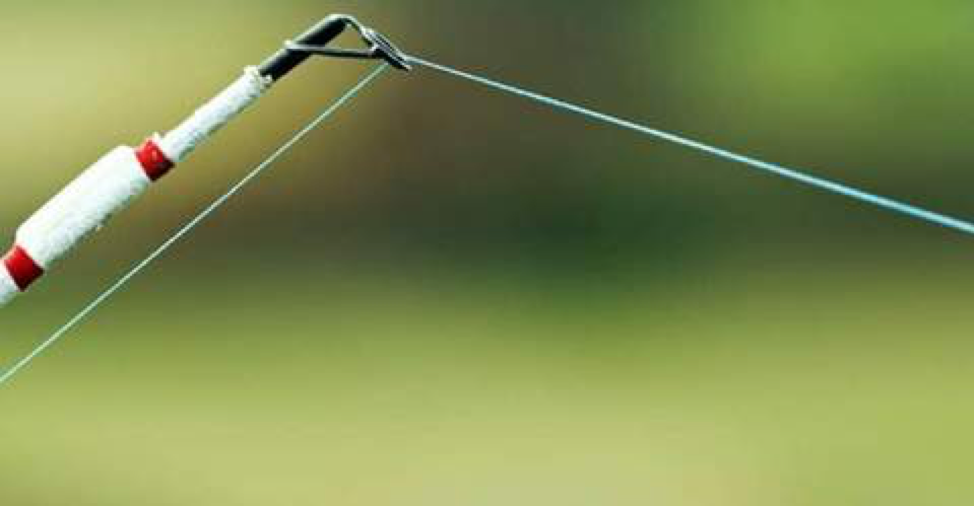
The fishing line is what can make or break your fishing trip. If you’ve a flimsy line, you won’t hear the end of birds’ nests and tangles.
Monofilament
First, of course, we’ve monofilament, which is the simple and easy choice. Yet, there’s nothing too exciting about it. It’s great for beginners, preserving the tension while warring with larger species.
Braided
This can be made out of 4 strands or 16. It all depends on what you desire from this line. Is it tension keeping, flexibility, strength, or quickness of action? Braided line is stronger and utterly different from any other fishing line. Its manufacturing process includes different types of polyethylene being weaved around each other.
Carbon
Carbon or fluorocarbon lines boast incredible resistance. They can slice through the waters, yet, their appearance is completely invisible.
Final Thoughts
When you’re training on any waterfront, it’s easy to keep to the gear that you already have and are comfortable with. Nonetheless, growth can never happen properly unless you step out of your comfort zone and try new things. If you keep track of this article, we’ll tell you whenever the products you’re going after are on sale.
